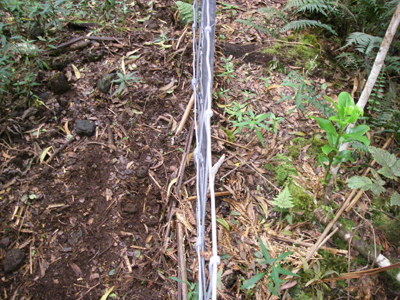Publications to Date
Wehr NH, Hess S, Litton CM (In Press) Biology and impacts of Pacific Island invasive species. Sus scrofa, the Feral Pig (Artiodactyla: Suidae). Pacific Science.
Long MS, Litton CM, Giardina CP, Deenik J, Cole RJ, Sparks JP (2017) Impact of nonnative feral pig removal on soil structure and nutrient availability in Hawaiian tropical montane wet forests. Biological Invasions, 19, 749-763. (PDF)
Evans EW, Ellsworth LM, Litton CM (2015) Impact of grazing on fine fuels and potential wildfire behavior in a non-native tropical grassland. Pacific Conservation Biology, 21, 126-132. (PDF)
Cole RJ, Litton CM (2014) Vegetation response to removal of non-native feral pigs from Hawaiian tropical montane wet forest. Biological Invasions, 16, 125-140. (PDF)
Murphy MJ, Inman-Narahari F, Ostertag R, Litton CM (2014) Invasive feral pigs impact native tree ferns and woody seedlings in Hawaiian forest. Biological Invasions, 16, 63-71. (PDF)
Chynoweth MW, Litton CM, Lepczyk CA, Hess SC, Cordell S (2013) Biology and impacts of Pacific Island invasive species. 9. Capra hircus, the feral goat (Mammalia: Bovidae). Pacific Science 67: 141-156. (PDF)
Cole RJ, Litton CM, Koontz MJ, Loh RK (2012) Vegetation recovery 16 years after feral pig removal from a wet Hawaiian forest. Biotropica, 44, 463-471. (PDF)
Dunkell DO, Bruland GL, Evensen CI, Litton CM (2011) Runoff, sediment transport, and effects of feral pig (Sus scrofa) exclusion in a forested Hawaiian watershed. Pacific Science, 65, 175-194. (PDF)

Figure 4b. Feral pig damage in native wet forests on the Island of Hawai‘i. This fence-line photo, taken only six months after the construction of a pig-proof fence, demonstrates pig disturbance to the soil surface. The left-side of the image (where pigs are still present) has almost no litter layer and limited plant establishment, while the right-side of the image (where pigs have been excluded) has an intact litter layer and abundant native forest regeneration.